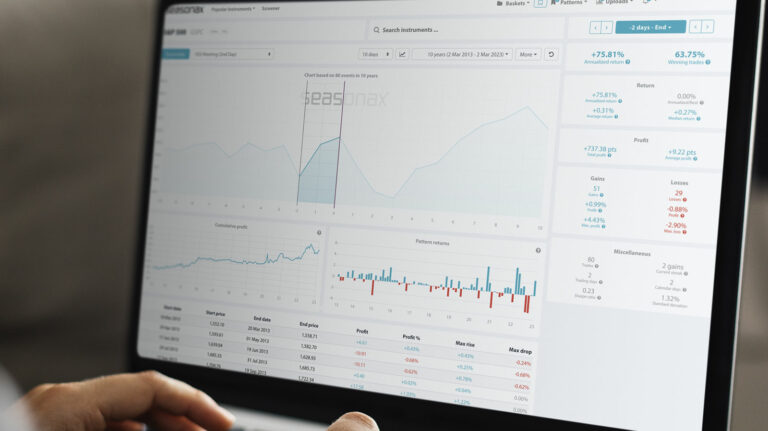You may already have guessed: when the vibrant colors of the autumn leaves are revealed in all their splendor, the strongest seasonal period of the year begins in the stock market – namely the year-end rally.
Stocks typically rise in this time period. However, there are questions, such as: how often does a rally take place, how strong is it, and when is the best time for investors to enter the market? Let me answer these questions for you below.
The “Golden Season” in the S&P 500 Begins Shortly!
The first illustration below depicts a seasonal chart of the S&P 500 Index. The chart was created by calculating the average returns of all years since 1950 and thus shows the typical seasonal pattern of the S&P 500 Index in the course of a calendar year. The horizontal axis denotes the time of the year, the vertical axis the level of the seasonal index.
S&P 500 Index, seasonal pattern since 1950

The S&P 500 Index has typically rallied from 26 October onward. Source: Seasonax
The arrows mark the year-end rally between 26 October and 03 January of the next year. In this time span of just over two months, the S&P 500 Index rose on average by 4.27 percent.
On an annualized basis this is equivalent to quite a large gain of 24.79 percent! By way of comparison: in the remainder of the year the S&P 500 Index generated an average annualized gain of a mere 3.58 percent.
You can see how superior the year-end rally is.
A Very High Win Rate of 82.61 Percent!
The seasonally favorable time period between 26 October and 03 January delivered positive returns in 57 out of 69 cases, or 82.61 percent of the years under review. This is quite high.
Thus, in addition to the well above average gain generated by the year-end rally, it also exhibits a very high win rate. Another positive aspect is that this has been measured over a very long time span of 69 years! The average gain was therefore not driven by a few outlier years. On the contrary, a strong rally has taken place quite frequently – what else could an investor ask for?
Let us examine the details more closely.
The bar chart below shows the return of the S&P 500 Index between 26 October and 03 January in every year since 1950. Green bars denote years in which a positive return was generated, red bars years in which losses were recorded.
S&P 500 Index, percentage return achieved between 26 October and 03 January in individual years since 1950

Gains clearly predominate! Source: Seasonax
As you can see, the green bars denoting positive returns clearly predominate.
However, there were also a few years in which the S&P 500 Index declined during this time period. One of these declines occurred last year, as indicated by the last red bar on the chart.
A Particularly Favorable Seasonal Pattern
There is no stock market rule that always works. Nevertheless, the high win rate and the well above average gain are evidence that the year-end rally is a particularly favorable seasonal pattern.
If you want to know how your favorite stocks tend to perform during the year-end rally, you can find out with just a few mouse clicks at app.seasonax.com or with the help of the Seasonax app at Bloomberg or Thomson-Reuters Eikon.


